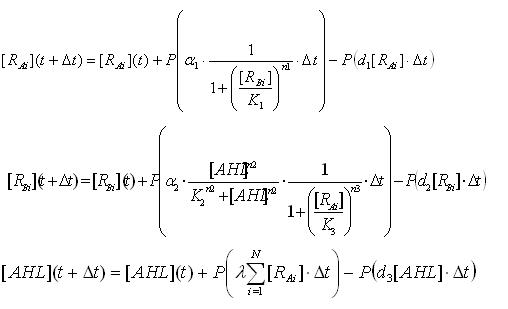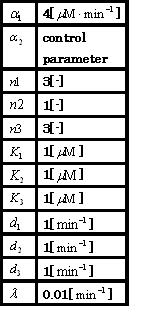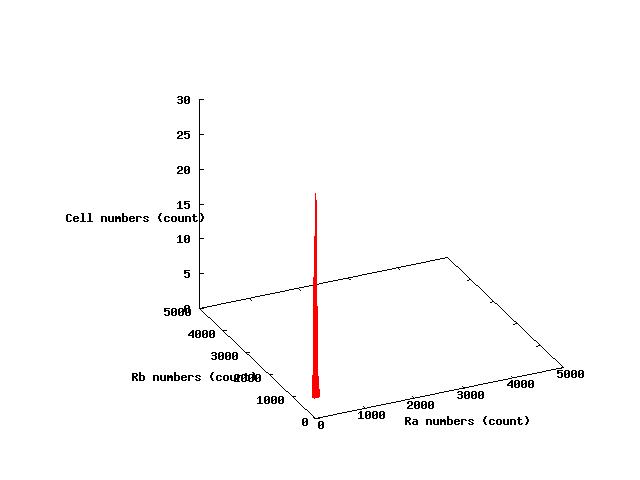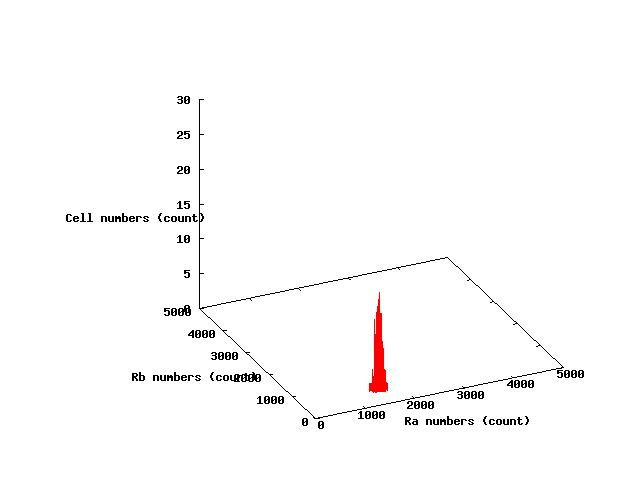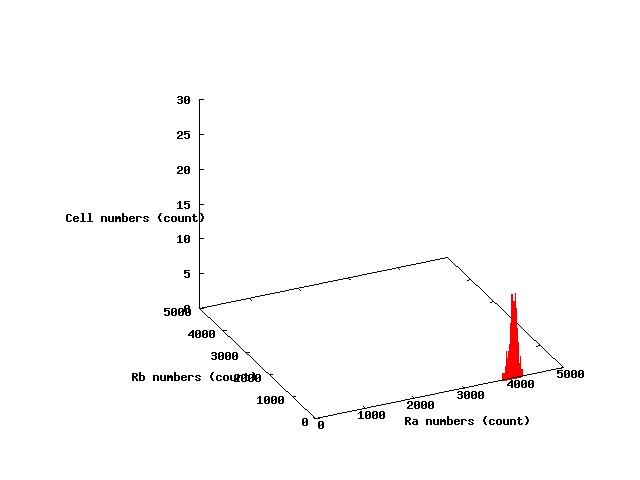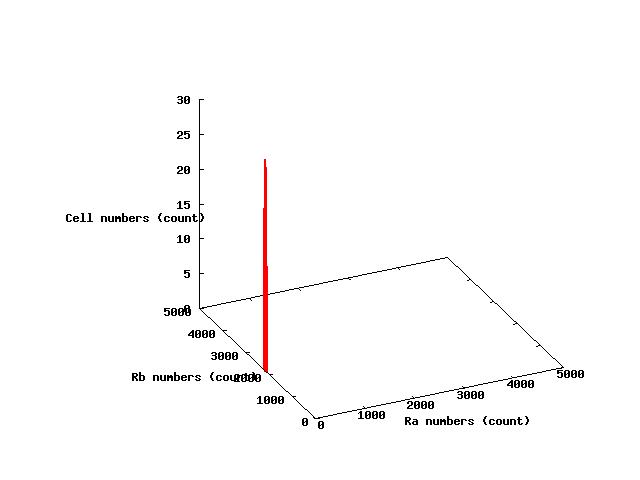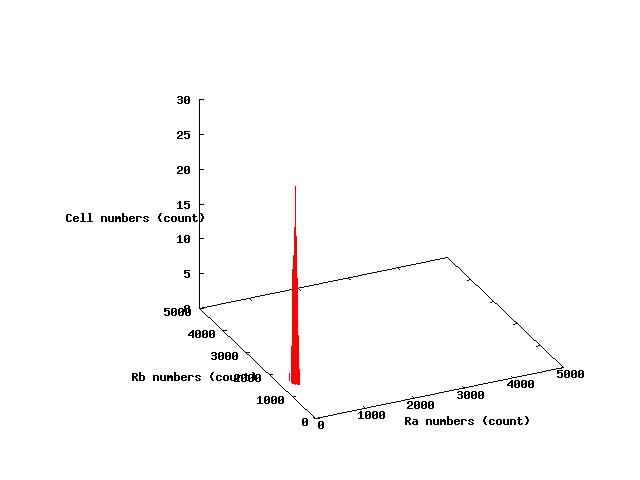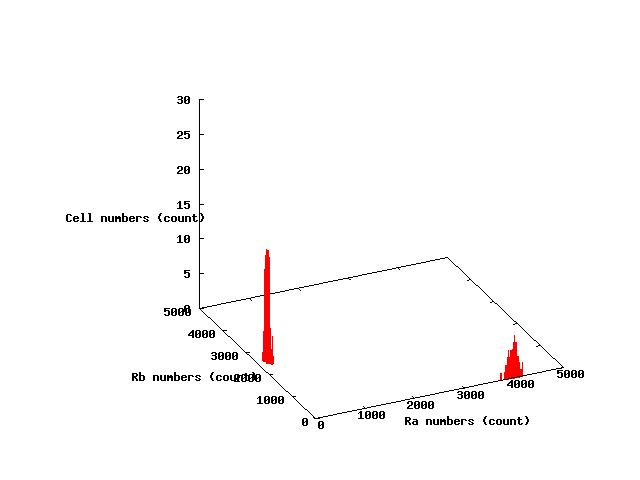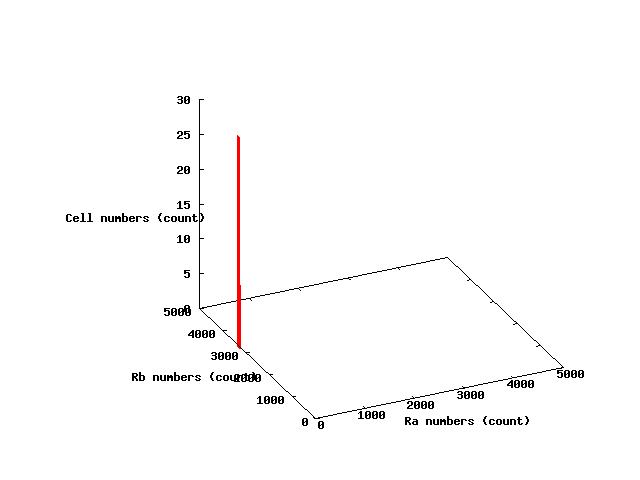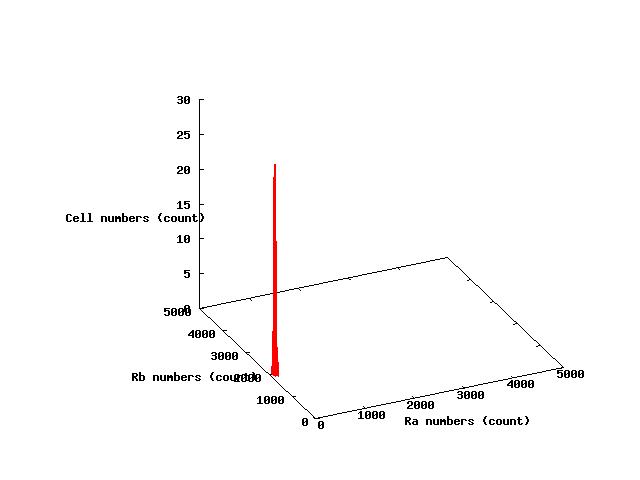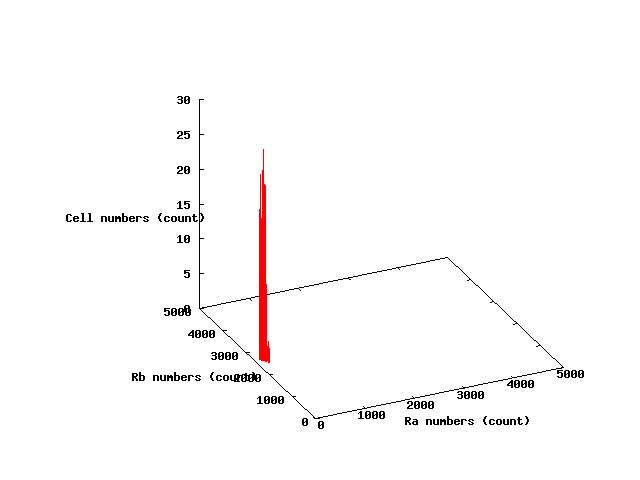Tokyo/Formulation/5.stochastic differential equation model with poisson random variables
From 2007.igem.org
Works top 0.Hybrid promoter 1.Formulation 2.Assay1 3.Simulation 4.Assay2 5.Future works
Step1 Step2 Step3 Step4 Step5
we introduced the terms of Ex 4-1 into a stochastic process to simulate the sthochastic behavior.we used Poisson random variables as a sthochastic process. Threfore,a stochastic differential equations were given as
ここより下は独立したページにすべき?
The values of parameters in the right table were used and the results of simulation were shown in Fig 5.1-3.
where α2 = 1(μM) in Fig 5.1,α2 = 2.7(μM) in Fig 5.2,α2 = 4(μM) in Fig 5.3. and it has been estimated that 1(μM) = 1000 molecules (count).
Fig.5.1 indicates that all cells shift to A state in the steady state and Fig 5.3 indicates that all cells shift to B state in the steady state.These results doesn't represent coexistence stable.
Fig.5.2 indicates that a portion of cells shift to A state and the others shift to B state in steady state;that is,individual cells are stable under stable coexistence.
movie here!!
movie here!!
movie here!!
Next,the relation between the results of simulation and phase plane are shown in Fig.5.4.1-3,where the nullclines of this system were Ex 4-3
Fig.5.4.1-3 indicate that the distribution of the cells corresponds with the stable equilibrium points.
Step.5 >> Formulation TOP
